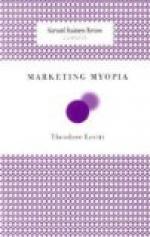“To this,” he goes on to say, “must be added the decomposing action which yeast exercises on a great number of substances, and which resembles that which sugar undergoes. I have shown that malate of lime ferments readily enough through the action of yeast, and that it splits up into three other calcareous salts, namely, the acetate, the carbonate and the succinate. If the action of yeast consists in its increase and multiplication, it is difficult to conceive this action in the case of malate of lime and other calcareous salts of vegetable acids.”
This statement, with all due deference to the opinion of our illustrious critic, is by no means correct. Yeast has no action on malate of lime, or on other calcareous salts formed by vegetable acids. Liebig had previously, much to his own satisfaction, brought forward urea as being capable of transformation into carbonate of ammonia during alcoholic fermentation in contact with yeast. This has been proved to be erroneous. It is an error of the same kind that Liebig again brings forward here. In the fermentation of which he speaks (that of malate of lime), certain spontaneous ferments are produced, the germs of which are associated with the yeast, and develop in the mixture of yeast and malate. The yeast merely serves as a source of food for these new ferments without taking any direct part in the fermentations of which we are speaking. Our researches leave no doubt on this point, as is evident from the observations on the fermentation of tartrate of lime previously given.
It is true that there are circumstances under which yeast brings about modifications in different substances. Doebereiner and, Mitscherlich, more especially, have shown that yeast imparts to water a soluble material, which liquefies cane-sugar and produces inversion in it by causing it to take up the elements of water, just as diastase behaves to starch or emulsin to amygdalin.
M. Berthelot also has shown that this substance may be isolated by precipitating it with alcohol, in the same way as diastase is precipitated from its solutions. [Footnote: Doebereiner, Journal de Chimie de Schweigger, vol. xii., p. 129, and Journal de Pharmacie, vol. i., p. 342.
Mitscherlich, Monatsberichte d. Kon. Preuss. Akad. d. Wissen, eu Berlin, and Rapports annuels da Berzelius, Paris, 1843, 3rd year. On the occasion of a communication on the inversion of cane-sugar by H. Rose, published in 1840, M. Mitscherlich observed: “The inversion of cane-sugar in alcoholic fermentation is not due to the globules of yeast, but to a soluble matter in the water with which they mix. The liquid obtained by straining off the ferment on a filter paper possesses the property of converting cane-sugar into uncrystallizable sugar.”
Berthelot, Comptes rendus de l’Academie. Meeting of May 28th, 1860, M. Berthelot confirms the preceding experiment of Mitscherlich, and proves, moreover, that the soluble matter of which the author speaks may be precipitated with alcohol without losing its invertive power.




